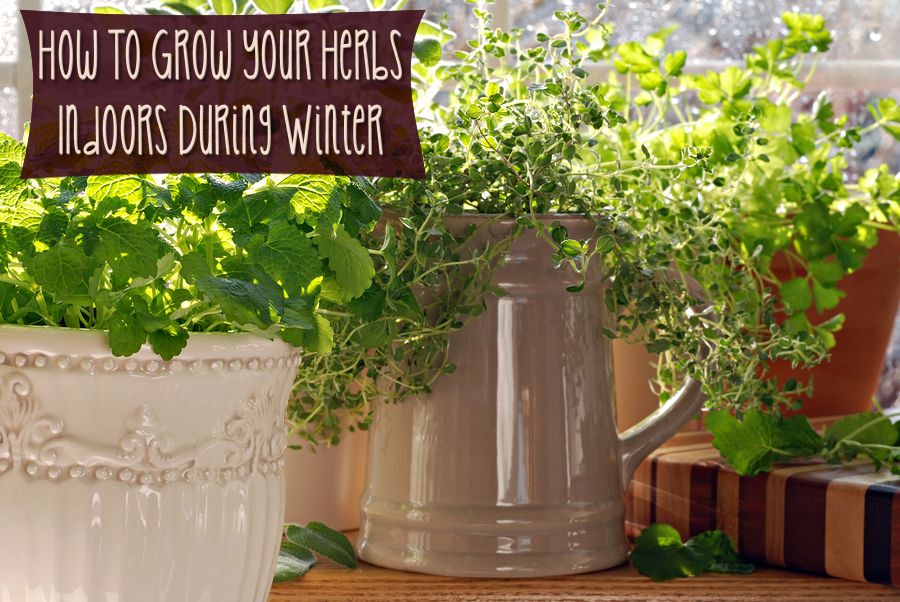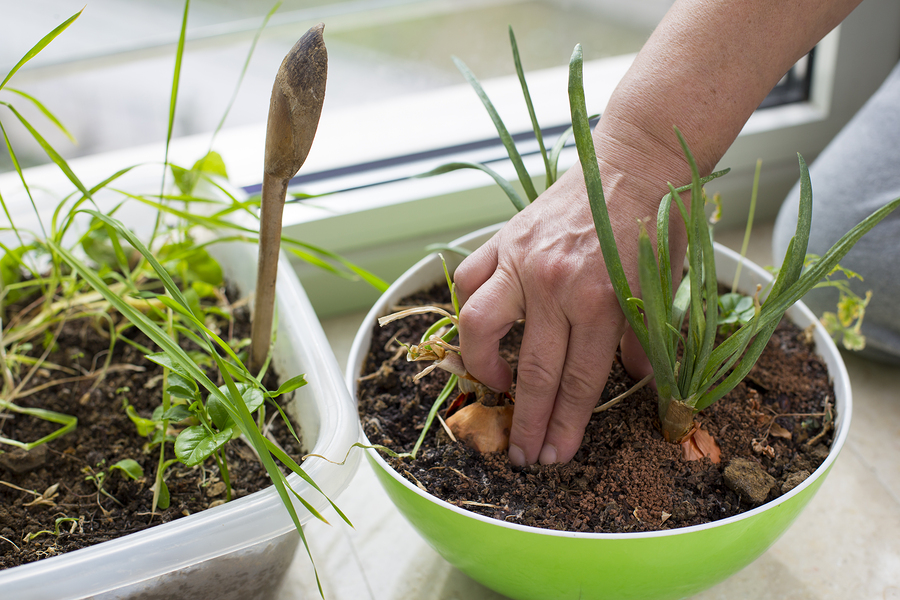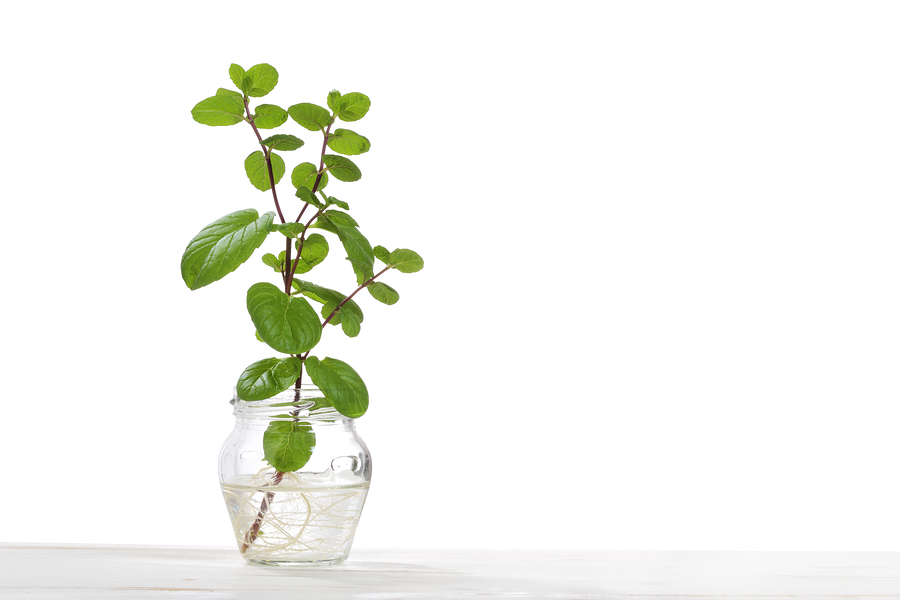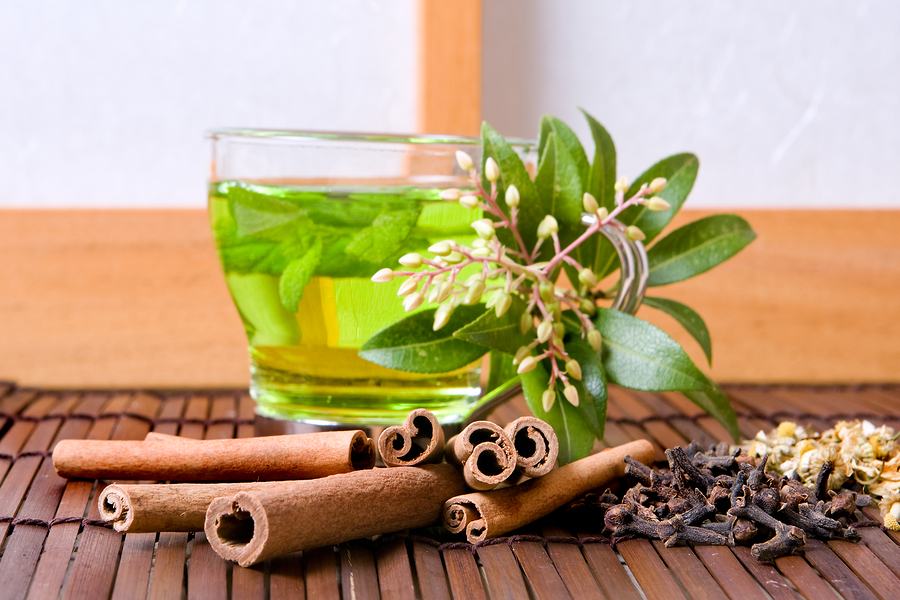Winter is approaching once again, and that means that many plants (and animals) will go dormant for the season. Having less color may be something you can live without, but going without your favorite home-grown herbs all season? Not acceptable!
To keep a fresh supply of those herbs on your table all winter long, all you have to do is move that herb garden indoors. It’s not as difficult as you may think. In fact, it’s rather simple.
Some gardeners actually prefer to grow their herbs indoors simply because they’re more accessible when they need them in their recipes or for teas. If you have a sunny windowsill, a few herb seeds and a bit if patience, you’ve got what it takes to grow your herbs indoors.
Getting Started
There are two methods you can use for growing your favorite herbs inside. The first is to put a planter filled with good potting soil and your favorite herb seeds right in front of a window that gets plenty of sunlight through the day.
To ensure successful growth, the location you pick should get at least six hours of sunlight every day — but not so much sun that it’s very hot in the afternoon. During the wintertime hot afternoons aren’t usually a problem, but remember that the glass can magnify the heat, so keep an eye on it just to be sure. The best spots for sunlight are going to be to the south, so look for some southern exposure.
If you just don’t have a spot that gets enough sunlight in the wintertime, you can use growlights to make up for any deficiency. Florescent shop lights will work as long as you keep them about 4 inches above the plants.
Of course, having the herbs growing right in your kitchen is ideal if you can do it. That gives you easy access when it comes time to use those yummy herbs.
A word on potting soil: while it may be tempting to save some money by just putting soil from your outside garden into pots and moving it indoors, that’s generally not a good idea. The soil you get that’s designed for pots (potting soil) is designed to retain moisture better and not dry out as fast. Remember that your outside soil has the benefit of the entire yard and lots of depth to draw water from. Plants in a pot do not have such an advantage, so getting good potting soil will ensure the best results.
The traditional container garden isn’t your only option for growing herbs indoors, though. If you don’t have ideal herb conditions you can use a hydroponic kit. These kits don’t require any soil at all, using liquid nutrients and special lighting instead. Herbs are actually some of the most popular plants to grow in a hydroponic garden, so finding the equipment needed for your indoor herb garden is easy.
Whether you decide to go with the traditional indoor container garden or a hydroponic one, the three things you must have to grow your herbs are good lighting, enough water and the proper nutrients.
Tips And Tricks For Growing Herbs Indoors
To speed the growth of your herbs you can opt to buy seedlings rather than planting the seeds yourself. If you chose to use seedlings, be sure to thoroughly inspect the plants before you bring them home. Look for signs of insect activity. If the plants shows any signs or otherwise looks anemic or suspicious, don’t buy it.
You need to give the plants plenty of room to grow. If you’re going with seedlings the descriptions will usually say how much room they require. If you’re planting the seeds yourself you’ll need to research that information in advance. Keep in mind that potted herbs don’t usually grow to full size, but be generous with the spacing anyway if possible just in case.
Water the herbs regularly and be sure that the excess water drains completely after watering. One of the biggest mistakes new indoor gardeners make is not draining the pots properly. Stagnant water is one of the most common plant killers because it will rot the roots.
The indoor air of your house during winter can often be too dry for herbs, so be sure to mist them regularly to keep the plants moist.
Make sure that you turn the plants often to keep them growing evenly on all sides. You want that sun to reach every part of the plants.
Limit the fertilization. Herbs tend to like moderate soil best. While it’s understandable that you want the best for your indoor garden, overusing fertilizer will actually hurt the plants rather than help them.
Curb your enthusiasm! It’s easy to get excited, but wait until your plants are six to eight inches tall before you start snipping leaves off. When they are large enough, don’t use more than about a quarter of the plant each time you harvest the leaves. Once you’ve removed the leaves, let at least that much grow back before collecting more. If you plan on using a lot of any given herb, just be sure to keep enough plants in your garden to always have plenty available.
In Summary
Growing herbs indoors during the winter is fun and practical. You’ll save time and money not having to go to the grocery store, not to mention that your herbs will be fresher and the quality higher than most anything you can buy elsewhere.
With a little sun, soil and water there’s no reason you have to go without your favorite herbs all winter long.
About the Author
Jonathan Leger is a gardening enthusiast. He runs a small site dedicated to the history, education and care of a variety of roses at CabbageRoses.net.













